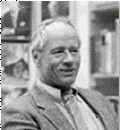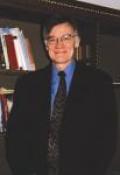From law officer to murderer to Hollywood consultant: the strange career of a man who became myth
Late in his life, Henry Fonda, at dinner with a producer named Melvin Shestack, recalled meeting an old man who said he had firsthand knowledge of a memorable Fonda character, Wyatt Earp, the legendary frontier lawman of John Ford’s classic My Darli
Can it be fair? Humane? Does it deter crime? These very current questions troubled Americans just as much in the day of the Salem witch trials as in the day of Timothy McVeigh.
He was a Northerner. He was an industrialist. He was a Jew. And a young girl was murdered in his factory.
ON DECEMBER 23, 1983, THE LEAD EDITORIAL IN THE ATLANTA CONSTITUTION began, “Leo Frank has been lynched a second time.” The first lynching had occurred almost 70 years earlier, when Leo Frank, convicted murderer of a t13-
IT BEGAN AS America’s most modern penal institution, and, for generations, the Vermont State Prison reflected the changing ways by which we thought we should punish our wrongdoers. Then, a tormented era and a ghastly crime combined to end its old career, and give it a surprising new one.
For a sense of the continuity of the of the terrorist tradition in America, consider this actual sequence of events: The FBI smashes a dead-serious plot to overthrow the federal government and reveals that, for more than a year, the right-wing militias involv
Is trial by jury the essential underpinning of our system of justice or, as more and more critics charge, a relic so flawed that it should perhaps even be abolished? An experienced trial judge examines the historical evidence in the case.
The distinguished lawyer could not restrain himself. Even in the somber pages of the American Bar Association’s Tort & Insurance Law Journal late last year, his rage blazed and fulminated.
During a single decade, Chicago invented modern organized crime and saw John Dillinger, the most famous of the hit-and-run freelancers, die in front of one of its movie houses. For those who know where to look, quiet streets and sad buildings still tell the story of an incandescent era.
A .45-caliber semiautomatic pistol fires a half-ounce lead cylinder at a speed of 579 miles per hour. If the bullet strikes a brick, it leaves a distinctive mark, a gouge surrounded by radiating cracks.
Why litigiousness Is a national character trait
BACK BEFORE CLAUS VON BULOW ever heard of Jeremy Irons, a judge who found the news media’s attitude toward the case puzzling put a question to a friendly television reporter.
How are we to win our national struggle with cocaine, heroin, marijuana, and other illegal drugs? Everyone agrees that drug-related problems are a plague on our society, destroying lives, helping wreck neighborhoods, poisoning schools, feeding crime, bleeding the economy.
On the hundredth anniversary of the unsolved double-murder of Andrew and Abby Borden, is it time to ask: What was going on in Lizzie Borden's family?
On the 20th anniversary of Watergate, a recently discovered diary reveals a similar conspiracy four decades earlier.
Lawrence O’Brien, the head of the Democratic National Committee at the time of the Watergate break-in, was not the first O’Brien burglarized on behalf of the GOP. Forty-two years earlier, James J.
Sociologists continue to be vexed by the pathology of urban violence: Why is it so random, so fierce, so easily triggered? One answer may be found in this nation's Southern past.
The legend of the most notorious of all outlaws belongs to the whole world now. But, to find the grinning teenager who gave rise to it, you must visit the New Mexico landscape where he lived his short life.
New Mexico is Billy-the-Kid country. In Santa Fe’s First Presbyterian Church, young Henry McCarty stood by in March 1873 as his mother exchanged vows with William Henry Harrison Antrim. Eight years later, alias Billy Bonney, a.k.a.
In the quiet New York courtroom, the little girl began to speak. “My name is Mary Ellen McCormack. I don’t know how old I am. … I have never had but one pair of shoes, but can’t recollect when that was.
Back in Prohibition days, the citizens of a West Virginia town decided to crack down on bootlegging and prostitution. The author remembers it well.
How does one describe a small town? And how does one explain a town when it sets out to catch all its sinners? All I can do is tell you a little of the history of my hometown, Hinton, Summers County, West Virginia, as I remember it.
The penitentiary was invented in the United States as a more rational and humane way of punishing. It quickly ran into problems that still overwhelm us.
Prisons are a fact of life in America. However unsatisfactory and however well-concealed they may be, we cannot imagine doing without them.
Hard Looks at Hidden History
One of the more unlikely results of the American Revolution was Australia. Most American colonists came here voluntarily, of course, but until 1776 we meekly accepted boatloads of His Majesty’s convicts as indentured servants.
Up until the last century in some parts of the country, a murderer’s guilt could legally be determined by what happened when he or she touched the victim’s corpse.
In 1646 in the Massachusetts Bay Colony, Mary Martin was pregnant and unmarried. Her paramour was a married man, but it was her status as a single woman that determined the nature of her crime.
The Lone Star state as it once was, proud, isolated, independent, the undiluted essence of America forever inventing itself out of the hardscrabble reality of the frontier
The Texans on these pages are a vanishing species, born of the vast and varied geography of the toughest frontier.
The Secret Service considered Emanuel Ninger a common counterfeiter. He saw himself as an American master of the impressionist school.
THE MOST PRESUMPTUOUS counterfeiter in American history was a blue-eyed, sandy-bearded, German sign painter named Emanuel Ninger. As a sign painter he was adequate; as an impressionist, a historic master. And a soaring egotist.
Eight generations back, the author discovered a forebear hanging on the family tree
WHEN A PUBLICATION wants to illustrate the story of Salem witchcraft, it often runs the painting The Trial of George Jacobs for Witchcraft , which hangs in the Essex Institute, Salem’s historical archive.
Did the fifty-five statesmen meeting in Philadelphia at the Constitutional Convention know that a witch-hunt was taking place while they deliberated? Did they care?
In 1913 the Ouija board dictated a novel. Twenty years later it commanded a murder. It is most popular in times of national catastrophe, and it’s selling pretty briskly just now.
PARKER BROTHERS , who bought the rights to the Ouija in 1966, denies that it is more than a game.
With the Depression pushing the studio toward bankruptcy, Warner Brothers had to resort to crime—and crime paid so well that the company was able to recruit the toughest guys that ever shot up a sound stage.
JACK WARNER RAN HIS organization the same way Al Capone ran his: ruthlessly. The problem was that, unlike Capone, he couldn’t simply wipe out the competition.
Jack Hughes was an outstanding passer of phony bills.
—More than a century ago, the city of St. Louis enacted a well-thought-out plan to legalize vice. What went wrong? Everything .
A little over a century ago an ambitious woman named Kate Clark, who kept a house of prostitution at 112 South Eighth Street, St. Louis, decided to move her business to larger quarters at Sixth and Elm.
In the shadow of Bunker Hill, bigots perpetrated an atrocity that showed a shocked nation that the fires of the Reformation still burned in the New World
On a sweltering Monday afternoon in July, 1834, Edward Cutter of Charlestown, Massachusetts, was startled by the sudden appearance of a woman in his house.
An Unfortunate Affair at Fullerton Which at the End is Amicably Adjusted.
Joe Lyons, the nineteen-year-old son of Isaac Lyons of Orangethorpe, shot and seriously wounded Morris Smith, son of W. J. Smith of the same place, at Fullerton at about half-past 9 o’clock on last Thursday morning.
One of Ruth Snyder’s Crimes Was Murder
In 1925 a woman named Ruth Snyder too up with a salesman—a corset and brassiere salesman to be exact—and together on March 20, 1927, they murdered her husband in his bed. Months later, they were both electrocuted.
On a warm Florida evening in 1933 a madman with a pistol and a personality profile now all too familiar—“unskilled, unfriendly, unmoneyed, and unwell”—came within inches of altering the course of American history in one of its most critical moments
The sun had gone down on a warm Florida winter day (it was seven in the evening of February 15, 1933) when Vincent Astor’s Nourmahal tied up at a Miami dock after twelve days of cruising through the Bahamas.





